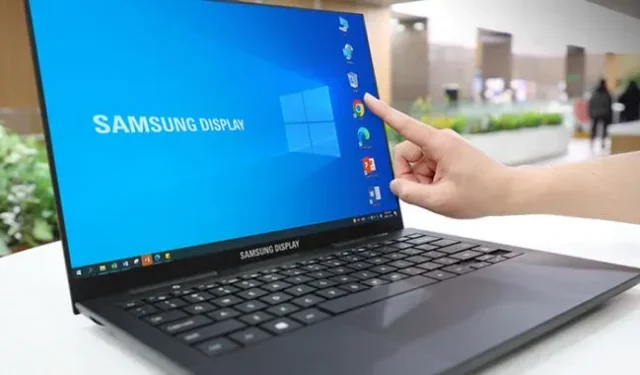Samsung’s new touch technology enables thinner, lighter OLED laptops

As many laptop manufacturers proved at CES earlier this month, there will be plenty to choose from in 2023 for laptops with an OLED display. The high-contrast and rich image quality of this technology entices creatives and power users alike. However, a new year means new ways to engage shoppers, so one of the approaches Samsung plans to take with its next Galaxy Books series involves the physical design of the screen.
On Tuesday, Samsung Display, which makes displays for various companies including parent company Samsung Electronics, announced that it has begun mass production of a new OLED touchscreen for laptops. Samsung Display calls it the first On Cell Touch AMOLED (OCTA) screen for laptops. According to Google’s translation of the South Korean company’s announcement, these screens use built-in touch sensors, while other laptop OLED panels use adhesive to apply a film screen with touch sensors. Film makes up 6 to 11 percent of the screen’s thickness, according to Samsung Display.
Because it uses fewer materials, Samsung Display also claims its OCTA technology is greener than the previous design and will weigh less due to the “simplified”panel design.
Samsung Display is clearly aimed at high-end panels, including specs like a 16:10 aspect ratio and “3K”resolution, which we expect to mean 2880×1800. Samsung Display’s announcement included a picture of the concept laptop’s 16-inch panel. With a 16-inch screen and a resolution of 2880×1800 pixels, the OLED screen will have a pixel density of 212.3 ppi.
The screens will also support 120Hz refresh rates. A high refresh rate already demands battery life, but since the panels are also OLED and potentially designed for thinner laptops with less room for a beefy battery and cooling, battery life will be a major concern for PCs using OCTA.
Samsung Display said it expects the panels to debut in the next series of Samsung Galaxy Book laptops due out in February and will be “very portable.”Samsung is expected to announce its new Galaxy Book PCs at the Galaxy Unpacked event on February 1st. Apart from Samsung, OLED screens should be suitable for “mid-sized”laptops.
New touchscreen laptops with OLED computing displays are finally starting to improve choices. In the laptop realm, some of the most extreme models expected for 2023 include the Lenovo Yoga Book 9i with dual 13.3-inch OLED screens; and the Asus ProArt Studiobook 16 3D OLED (H7604) and Vivobook Pro 16 3D OLED (K6604), both of which have glasses-free 3D OLED. In fact, almost every laptop in Asus’ 2023 lineup will have an OLED variant. There will also be more budget OLED options this year, and the technology is starting to come into play for gamers with 240Hz OLED laptop panels (also made by Samsung Display).
Samsung Display’s OCTA OLED has been the first to appear in smartphones since the manufacturer introduced it in 2010. If the design proves successful in laptops, companies could get a bit more room for things like longer lasting batteries, better cooling for better performance, or, dare we dream, a better selection of ports than what’s currently available in OLED laptops..
Leave a Reply